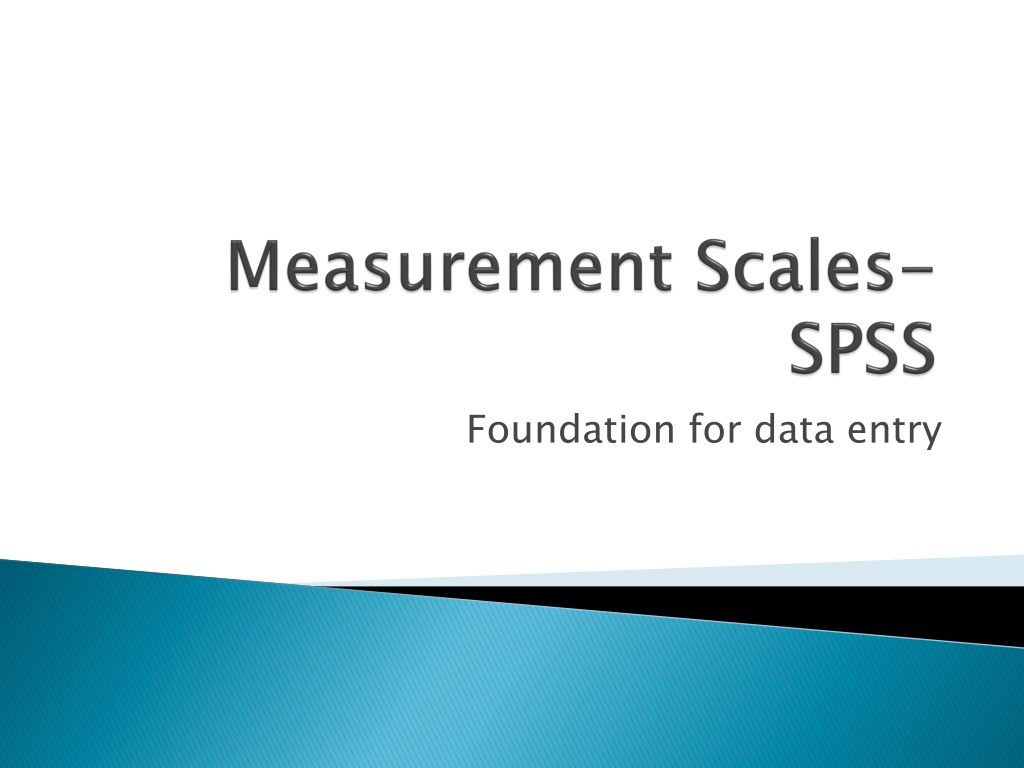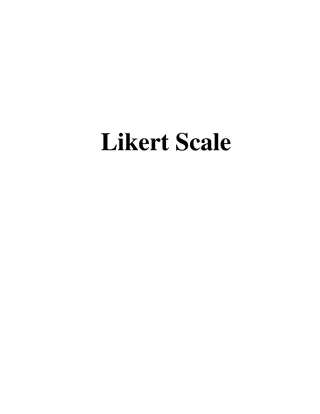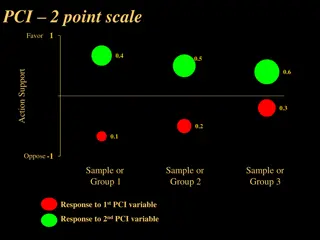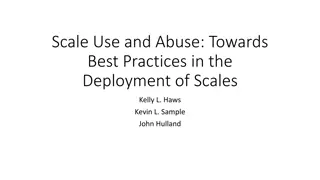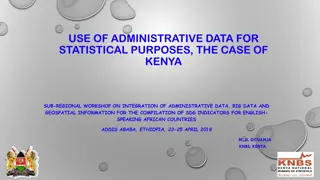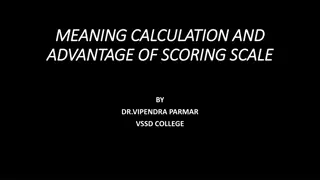Understanding Data Measurement Scales in Statistical Analysis
Explore the importance of selecting the correct scale from Measure Column for accurate statistical analysis and data description in SPSS. Learn about different scales such as Nominal, Ordinal, Interval, and Ratio, and their significance in assigning values, arranging objects, and performing computations in statistical procedures. Discover examples and applications of each scale in data measurement and analysis.
Download Presentation

Please find below an Image/Link to download the presentation.
The content on the website is provided AS IS for your information and personal use only. It may not be sold, licensed, or shared on other websites without obtaining consent from the author. Download presentation by click this link. If you encounter any issues during the download, it is possible that the publisher has removed the file from their server.
E N D
Presentation Transcript
For accurate statistical analysis and data description it is necessary to select the correct scale from Measure Column. In SPSS three options are available these are Scale Nominal Ordinal
It is a measure that is used for assigning numeric values to objects in order to label them. These are merely for identification and don t have any intrinsic order. are used for categorization and for other statistical procedures . Examples can be classification on the basis of Hence , it provides convenient ways of keeping track of people, objects and events. These gender, occupation, martial status etc.
The ordinal scale places objects or events in order. Hence, it helps to arrange the object in the highest or lowest order. The use of ordinal scale implies a statement of greater than or less than without being denoting to show how much greater than or less than. It includes variables which are measured on likert scale or semantic differential scale. For example in case of data collected about education, you can set an order lowest to the highest by assigning 1 to illiterate, 2 to primary education, 3 to secondary education, so on and so forth. from the
It measures have intrinsic numeric meaning that computations. variables. So, it includes both the Interval and Ratio Scale. Interval Scale is a ordered scale in which the difference between measurements is a meaning quantity but it does not have any true zero point. here is centigrade temperature increase in 30 degree to 40 degree is same as increase from 80 degree to 90 degree. is used for It typical default mathematical for is numeric The best example to quote
Ratio Scale- These are more advance than interval scales as they have an absolute or true zero of measurement. Hence, it is ordered scale in which difference between the point. distance etc. measurements For example, height, weight, length, involves a true zero
Nominal Scale Chi-square Likelihood Ratio, Good man and Kruskal tau, Binomial Cochran Ordinal Scale Median, Interquartile, Friedman Two Way ANOVA, Kendall Co- efficient of concordance, spearman s Rank Correlation Ratio Scale Coefficient of variation CFVAR=SD/M Interval scale Mean, standard deviation, Pearson Product- moment correlation, t- test, Analysis of variation(ANOV A), MANOVA, Factor Analysis, regression Analysis, Multiple correlation
